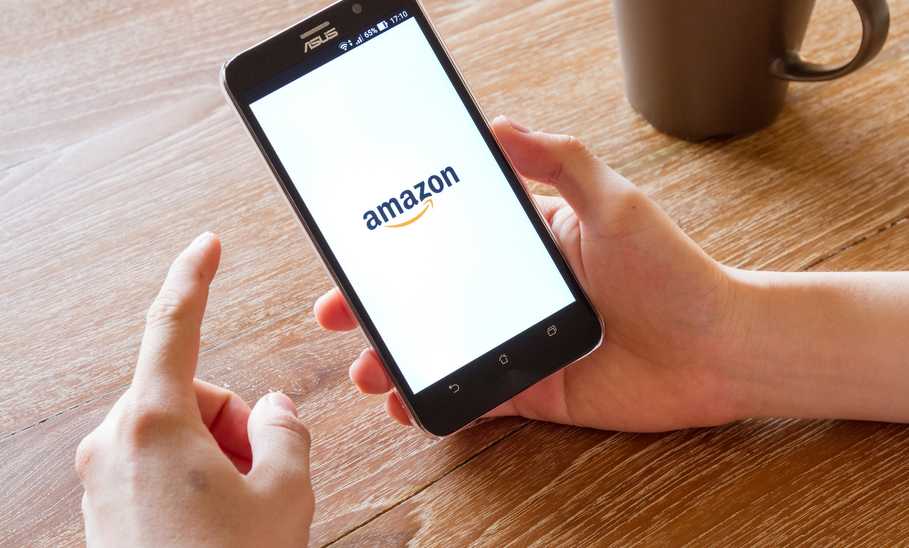Weird brand names on Amazon explained


Our evaluations and opinions are not influenced by our advertising relationships, but we may earn a commission from our partners’ links. This content is created by TIME Stamped, under TIME’s direction and produced in accordance with TIME’s editorial guidelines and overseen by TIME’s editorial staff. Learn more about it.
Amazon really changed everything for shoppers. Never before has one retailer offered such an absurdly huge selection of items. It does this, of course, by functioning in part as a shopfront for a massive number of suppliers all over the world—in fact, there are over 9.7 million sellers using the platform.
This means an enormous variety of products are available, but at the same time, a lot of similar options. Buying a phone cable, for instance, offers up a huge number of choices. Some of these products are made by enormous, household name brands, while others come from companies you’ve never seen before and—if you are in the Anglophone world—might have trouble pronouncing or even recognizing if you encounter them again. Yet sometimes their wares have huge numbers of ratings, suggesting they’ve sold massively. What’s going on?
While it can seem like they’ve appeared out of nowhere, a lot of these brands started out subcontracted by other, possibly better-known brands, but now have the opportunity to cut out the middleman.
“Many of the obscure brands that are exclusive to Amazon are factory developed or factory direct brands,” says Lori Fields, Amazon Marketplace strategist at digital agency Jay Street Partners. “These Amazon-focused companies emerged from a prior business strategy in which the factory produced goods for foreign exporters. Then, with the rise of Amazon and its courtship of overseas factories, the manufacturers themselves have broken through the fourth wall and are now able to sell directly to customers on the basis of lower-priced items, with branding taking on a secondary role.”
When buying premium branded goods, you’re paying for more than just the product itself—you are paying for branding, advertising, warranties, packaging, and more. Foregoing a lot of this, and potentially substituting in some cheaper components, can mean much lower prices.
Most well-known brands put a lot of money, time, and thought into branding, often enlisting highly-paid specialists who understand the optics and psychology of branding inside and out. That’s often not what’s going on here. “These brands have never been connected to a broader branding strategy,” says Fields. “Instead, they were created at the factory level using a price-driven paradigm. This explains why certain brand names are ‘funny’ or unrecognizable.”
In many cases, it’s something of a ‘give it a go and see what happens’ approach, and multiple obscure-seeming Amazon brands might actually stem from the same manufacturer. “The low cost of entry for creating a brand on Amazon encourages sellers to experiment with multiple brand names,” says Robert Khachatryan, CEO and founder of Freight Right Global Logistics. “This leads to the presence of several unfamiliar or oddly-named brands that are often short-lived or focused on niche markets.”
However, others have more thought-out branding strategies. “Many brands adopt unusual or generic names to stand out in search results or to bypass existing trademarks,” says Khachatryan. “Brands like Mellanni (known for bed sheets) or Mpow (famous for headphones) seem to have emerged primarily on Amazon, where they’ve become highly successful despite their unconventional names.” Or, in part, due to them—a well-chosen name can stick in people’s minds, convey a particular image and, well, become a full-on brand.
“Some sellers use data-driven strategies to select names that are likely to rank higher in search results, capitalizing on specific keywords and trends,” he adds. “Zinus is a furniture brand that gained popularity on Amazon due to its catchy, short name that performs well in search queries.”
Some of these manufacturers are only selling one or two products, so why even bother with a brand? Nobody’s searching for these unusual names, after all—they’re searching for headphones. As brand consultant Ian Lamont explains in this YouTube video, it’s because Amazon offers them better protection. Amazon’s Brand Registry offers various services that aren’t available to non-trademarked, non-branded sellers. As well as copyright protections, it offers better analytics tools and additional promotional opportunities. This means having a brand—any brand—is preferable to not having one, and an unpronounceable stream of letters like DGPIOD or FRENTYKIL is a lot less likely to land you in hot water with other brands by infringing on their trademarks.
Read, Also: Known Brand Versus White Label: When a Name Is Just a Name (Except When It’s Not)
Potentially. While some little-known brands that pop up on Amazon are fairly unambiguous in their origins—Anglicized spellings of Chinese words and names are particularly common when buying tech parts—some might try to muddy the waters a little. “Some sellers use unconventional names to mask the origin of products, often to avoid negative connotations associated with certain countries of manufacture,” says Khachatryan. “This practice can help them attract a broader customer base without preconceived biases.” He points to Orolay, a Chinese brand known for its down jackets, one of which achieved viral success beginning in 2017, known as “the Amazon coat". This may have been less likely if it had a less geographically neutral brand name.
Some do. There are enormous success stories that have transcended their origins and are now part of the consumer technology landscape. “Anker started as a small brand offering affordable electronics and has grown into a major player, largely thanks to its strong presence on Amazon,” says Khachatryan.
The longer all of this goes on, the more savvy all manufacturers and suppliers become about what works and what doesn’t. The era of slapping any old name on and hoping for the best might be over. “In my opinion, it’s beginning to change,” says Fields. “The factories now have access to more information, AI tools, and other meaningful overseas distribution channels.”
The information presented here is created by TIME Stamped and overseen by TIME editorial staff. To learn more, see our About Us page.



